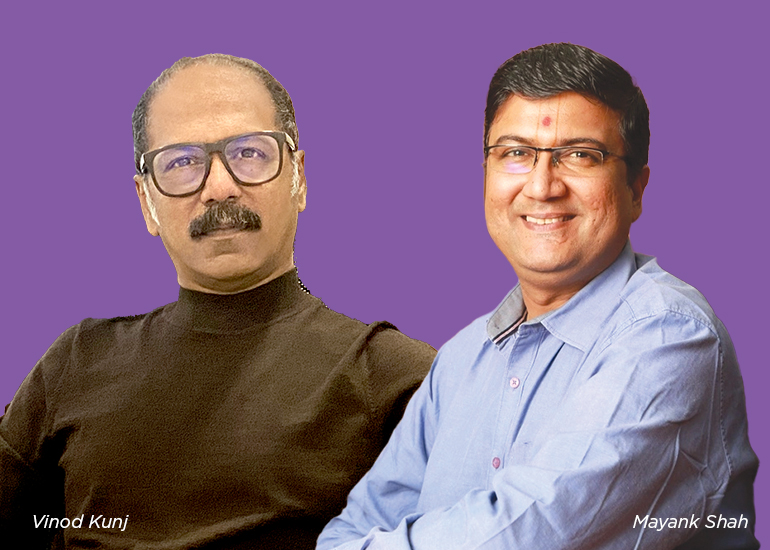Your child, who is banned from drinking a cold soda pop, which in all honesty, is only a weekend treat, downs ‘health drinks’ twice a day, every day, that is seven days a week, that is 365 days, give or take. That is more than 700 drinks a year. But now you learn that those drinks were anything but healthy, their sugar content can rival the choicest Indian sweets. In recent times, major global brands and FMCG giants have found themselves embroiled in controversies over their failure to uphold health and safety standards. From Mondelez’s Bournvita to Nestle’s Cerelac, iconic products have faced scrutiny under the concerned lens of conscious consumerism, as regulatory bodies take note. Nestle faced allegations of excessive sugar content in its baby food brand, Cerelac, particularly in Asian and African countries, and not in developed markets. While Nestle defended itself by citing a reduction in sugar content over the years, the accusations raised concerns about health standards in regions with less stringent regulations. Furthermore, Singapore and Hong Kong’s food safety watchdog banned spice products from popular Indian brands MDH and Everest, after detecting a cancer-causing chemical, ethylene oxide, in the products. This development underscored the global ramifications of health and safety lapses in the FMCG industry.
These controversies that highlight health risks, also points out the impact of conscious consumerism and health influencers in the modern era of social media. Additionally, they also raise questions whether multinational corporations apply varying levels of importance to health and safety standards across different regions, especially in developing nations such as India.
The Role of Advertising
In times of crisis, the role of advertising becomes paramount for brands. How else Maggi could have made its comeback? Let’s understand from experts the repercussions of such incidents on the businesses and advertising strategies of major industry players, especially in the evolving landscape of brand communication and consumer trust. “The advertising strategy should prioritize data-driven approaches. Monitoring consumer sentiment and tracking communication effectiveness are crucial. Adjustments should be made based on the severity of the issue. Stronger brands with loyal customers may require less advertising investment to manage crises. Regulatory scrutiny may necessitate increased spending on compliance communication. By navigating their response and advertising strategy thoughtfully, brands can mitigate damage and rebuild consumer trust over time,” says Amita Srivastava, Vice President – West, Carat India while adding that brands that are prioritising health and safety, and communicating transparently, build stronger consumer relationships.
“The advertising strategy should prioritize data-driven approaches. Monitoring consumer sentiment and tracking communication effectiveness are crucial. Adjustments should be made based on the severity of the issue. Stronger brands with loyal customers may require less advertising investment to manage crises. Regulatory scrutiny may necessitate increased spending on compliance communication. By navigating their response and advertising strategy thoughtfully, brands can mitigate damage and rebuild consumer trust over time,” says Amita Srivastava, Vice President – West, Carat India while adding that brands that are prioritising health and safety, and communicating transparently, build stronger consumer relationships.
“Strategies should emphasise transparent communication about ingredient sourcing, safety protocols, and clear labelling. Authentic partnerships with health professionals/influencers and user testimonials can enhance brand credibility. Leveraging data for personalised communication and informative content on health and safety topics helps engage consumers effectively,” she appends.
Multinational Corporations and Regional Standards
Are multinationals not taking the Indian consumer seriously? What could possibly be the reason for different health and safety standards for different regions? The debate has been raging on social media. Harish Bijoor, Business & Brand-Strategy Expert & Founder, Harish Bijoor Consults Inc. explains that brands have typically applied different standards for markets. He says, “Major multinational players entering India often view the market through a different lens. Sometimes, it’s driven by the desire for additional profits, leading to shortcuts, while other times it’s a quest to lower global standards and resort to shortcuts adhering to lower local acceptable standards. The lack of stringent regulation has further facilitated their entry into previously third-world markets. In the case of Indian brands expanding overseas - they have introduced the brand into developed markets worldwide but have faced criticism due to shortcuts and substandard products. The key factor is adopting different strokes for different folks, as opposed to applying a gold standard for all markets alike.”
Harish Bijoor, Business & Brand-Strategy Expert & Founder, Harish Bijoor Consults Inc. explains that brands have typically applied different standards for markets. He says, “Major multinational players entering India often view the market through a different lens. Sometimes, it’s driven by the desire for additional profits, leading to shortcuts, while other times it’s a quest to lower global standards and resort to shortcuts adhering to lower local acceptable standards. The lack of stringent regulation has further facilitated their entry into previously third-world markets. In the case of Indian brands expanding overseas - they have introduced the brand into developed markets worldwide but have faced criticism due to shortcuts and substandard products. The key factor is adopting different strokes for different folks, as opposed to applying a gold standard for all markets alike.”
Elaborating further, he says, “MNCs have been ‘managing’ their businesses in global markets, not ‘directing’ them, which is a fault. Adopting a gold standard of consumer acceptance norms and applying it across all markets is imperative for MNCs, yet this has not been consistently followed. When an issue arises with any product in any market, it should be communicating correctly across all markets, not just where it was initially identified. However, issues related to cost and price have hindered such benevolent self-regulation movements within MNCs.” Lloyd Mathias, Angel Investor & Business Strategist opines that quality differentiation based on location is unacceptable. “While some adjustments may be made for local preferences in certain categories like food, such as adding more salt for spicier tastes, compromising on quality is unjustifiable. Variations in taste across countries may occur due to different ingredients used, influenced by the supply chain factors. However, exposing customers to higher risks or differing quality standards due to logistical issues is unacceptable. Any disparities in quality standards must be addressed promptly,” he shares.
Lloyd Mathias, Angel Investor & Business Strategist opines that quality differentiation based on location is unacceptable. “While some adjustments may be made for local preferences in certain categories like food, such as adding more salt for spicier tastes, compromising on quality is unjustifiable. Variations in taste across countries may occur due to different ingredients used, influenced by the supply chain factors. However, exposing customers to higher risks or differing quality standards due to logistical issues is unacceptable. Any disparities in quality standards must be addressed promptly,” he shares.

Conscious Consumerism on the rise
Last year, health influencer Revant Himatsingka, aka @foodpharmer, triggered a viral uproar by exposing the high sugar content in Bournvita, leading to widespread criticism and subsequent sugar reduction measures by the company. Later, the Mondelez-owned Cadbury’s flagship brand courted further controversy over its brand message. It prompted an advisory from the Ministry of Commerce to remove such products from the ‘health drink’ category on e-commerce platforms. Avik Chattopadhyay, Co-founder & Partner, Expereal India is of the opinion that consumer rights groups and activists should be closely followed on social media platforms. “The Bournvita case served as a significant milestone in this regard. Another issue is the lenient punishment handed to brands that compromise critical factors like health and safety. Public apologies, in my opinion, are insufficient as a form of punishment. There should be bans imposed for specific durations based on the severity of the offense. Brands often resort to intellectual and financial manipulation to emerge from such predicaments relatively unscathed. Moreover, when brands have a forgiving customer base, they have little reason to be genuinely concerned,’’ he adds.
Avik Chattopadhyay, Co-founder & Partner, Expereal India is of the opinion that consumer rights groups and activists should be closely followed on social media platforms. “The Bournvita case served as a significant milestone in this regard. Another issue is the lenient punishment handed to brands that compromise critical factors like health and safety. Public apologies, in my opinion, are insufficient as a form of punishment. There should be bans imposed for specific durations based on the severity of the offense. Brands often resort to intellectual and financial manipulation to emerge from such predicaments relatively unscathed. Moreover, when brands have a forgiving customer base, they have little reason to be genuinely concerned,’’ he adds.
“Unlike in the past, social media now plays a crucial role. Companies can be called out, as seen in the Bournvita sugar issue, where an influencer highlighted excessive sugar content. Influencers can hold companies accountable for non-compliance. However, they may also spread falsehoods, as observed in the FinTech industry.”
Brands, irrespective of the fear of social media, must be mindful of their offerings. As they navigate regional standards and consumer activism, transparency and accountability remain paramount for sustaining long-term relationships with consumers.























